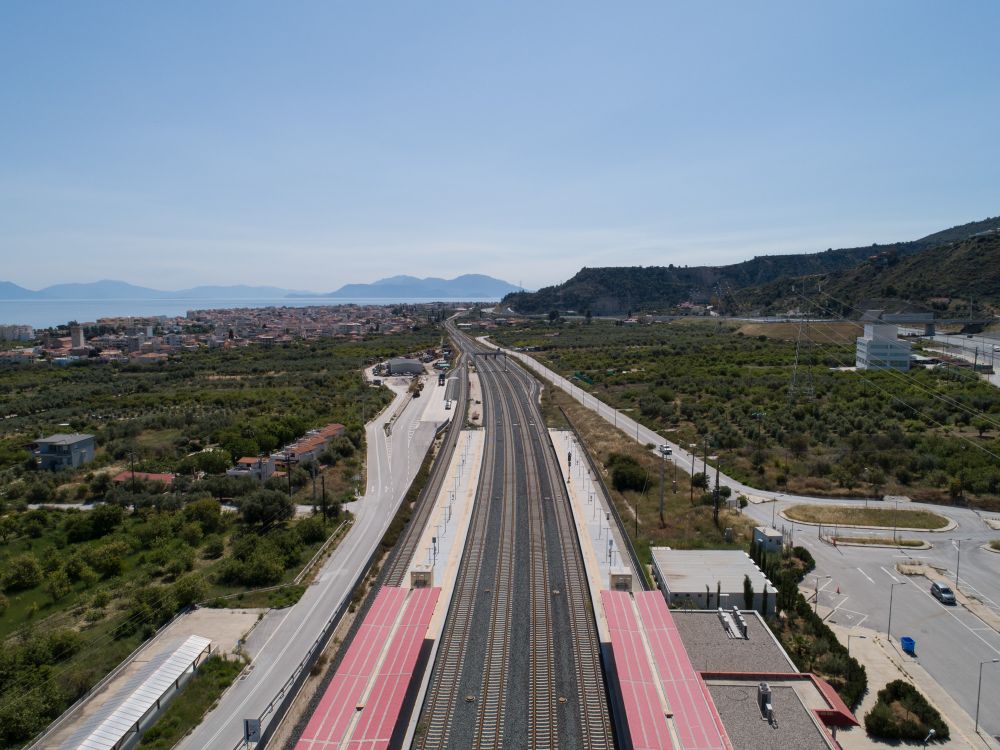By developing infrastructure in a country like Greece, with its difficult geographical relief that creates restrictions on the movement of even nearby areas, you create the conditions for development that in other European countries are self-evident.
To be more clear: If we go, not too far back in time, in the 1990s let’s say, to go from Grevena to Ioannina which is a distance of about 100 kilometers required 3 hours of difficult and dangerous driving in the mountains. The same was true for someone to go from Thessaloniki to Alexandroupoli, from Patras to Ioannina, and so on.
If we go to most European countries, connecting cities even without the use of closed highways was a much easier task at least when these infrastructures were created. The creation of road infrastructure in the last 30 years and in Greece corrected this natural “injustice”.
It united most of the cities together and formed that environment where the movement of people and goods now had the same characteristic as most countries in Europe. The big difference in relation to this is the money that had to be spent because of the geographical relief that our country has. Due to the great contribution of the European Union, Greece today has managed to create remarkable road infrastructures.
In the field of railways this is even more difficult for Greece. We have to deal with a small network which for 120 years has not developed beyond a few small exceptions. Why it was not developed is another matter, but the fact is that today our country is not rail-friendly throughout the territory (at least on the mainland).
Almost all of Peloponnese (with the exception of its northern coastal part), all of Epirus, important parts of Western Macedonia, large parts of Central Greece and even Crete today are outside the geographical map. Somehow, the Greek railway network is the last in Europe in terms of mileage coverage.
The big question, then, is how the country can repeat the successful development of road transport and rail transport. How will it aim to either reactivate old lines, or how will it expand its network throughout the territory.
The difficulties and the role of ports
The big thorn for the country in relation to the railway is that infrastructure is now combined with the term “sustainability”, meaning that the investment that will be made for the extension of the lines can be commercially viable. In relation to this we have two main difficulties: the first is that line extensions cost too much money due to the mountainous terrain of the country and the second is that there is not much to expect in terms of population or trade.
What the country can exploit to be able to finance the development of the railway across the territory is its geographical position. Let’s not laugh, these expansions will not bring money from passenger transport (you have to compete with road and in some cases air transport) but from freight. This is what the Ministry of Infrastructure is doing today with the development of the Eastern Railway Egnatia, i.e. from Thessaloniki to Kavala and Alexandroupoli.
The movement of goods within and especially outside of Greece to Europe and Asia is perhaps the strongest card to be able to see the train expand to areas that do not have coverage today. The creation of Logistics Parks and VIPE but also the development of ports in the western part of the country can also bring the train to create the tripartite VIPE-Railway-Ports and traffic of goods to Europe.
Igoumenitsa is a good example. Who would ever consider this place to be a key entry-exit gateway to the rest of Europe. Today, however, it is a strong asset because of the road infrastructure for the movement of passengers and goods.
The same is now happening with Alexandroupoli. So why not other ports such as Astakos, Kyllini or Kalamata follow in the same footsteps and bring along the arrival of the train.
Future expansions of the network
On paper, the country has plans for the first major extension of its railway network from Thessaly to Epirus (funds have been secured for the study of the new line). The Kalambaka-Ioannina-Igoumenitsa line will give new perspectives to both the region and the port. At the same time, it prepares the ground for the future train to go down to Antirrio. After all, the big gap in the railway map of the country shows itself there. Also, the reopening of the railway in the Peloponnese is possible because the railway infrastructure exists.
At the Suburban Railway level, we see that the Ministry of Infrastructure has already in progress, in Attica, the extension of the network in Eastern Attica to Rafina and Lavrio and west to Elefsina. The goal here is also the ports. A new railway connection with the 6th pier is also being promoted in Thessaloniki. In this way, the Greek railway network will finally be able to grow.
The coming years and decades are sure to be rail-related. We also have the fortunate circumstance that Europe is turning its back on roads and wants to strengthen its railway infrastructure. After the NSRF 2021-2027 which has more or less determined the priorities and the needs to cover the infrastructure of the country, the new programming periods will be able to provide motivation so that in a future Greece we can see the railway circulating throughout Greece.
ΜΗΝ ΞΕΧΑΣΕΤΕ
- Ακολουθήστε το ypodomes.com στο Google News και μάθετε πρώτοι όλες τις ειδήσεις για τις υποδομές στην Ελλάδα
- Δείτε την εταιρική μας σελίδα στο LinkedIn
- Εγγραφείτε στο Newsletter μας, για να λαμβάνετε κάθε εβδομάδα στο email σας τα δημοφιλή άρθρα μας
